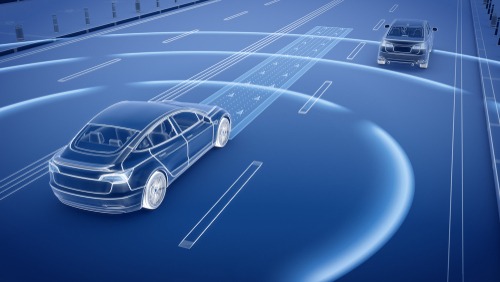
The Insurance Institute for Highway Safety (IIHS) announced a new ratings program earlier this month to encourage automakers to incorporate more safeguards into their partial driving automation systems.
The institute said that out of 14 systems tested, only one earned an acceptable rating. Two were rated marginal and the remaining 11 were rated as poor.
“We evaluated partial automation systems from BMW, Ford, General Motors, Genesis, Lexus, Mercedes-Benz, Nissan, Tesla and Volvo,” IIHS President David Harkey said. “Most of them don’t include adequate measures to prevent misuse and keep drivers from losing focus on what’s happening on the road.”
IIHS officials said the only system to earn an acceptable ratings was the Teammate system on the Lexus LS. The GMC Sierra and the Nissan Ariya both earned marginal ratings, the IIHS said, however, the Lexus LS and Ariya both offer an alternative system that earned a poor rating. Officials said the Ford Mustang Mach-E, Genesis G90, Mercedes-Benz C-Class sedan, Tesla Model 3 and Volvo S90 also earned poor ratings, officials with IIHS said, with some of them receiving poor ratings for more than one version of partial automation.
“Some drivers may feel that partial automation makes long drives easier, but there is little evidence it makes driving safer,” Harkey said. “As many high-profile crashes have illustrated, it can introduce new risks when systems lack the appropriate safeguards.”
Partial automation vehicles are not self-driving, officials said, and human drivers must still handle many driving tasks, as well as be ready if anything goes wrong. Testing found that while most partial automation systems have some safeguards in place to keep drivers focused and ready, the systems are not robust enough.
“The shortcomings vary from system to system,” said IIHS Senior Research Scientist Alexandra Mueller. “Many vehicles don’t adequately monitor whether the driver is looking at the road or prepared to take control. Many lack attention reminders that come soon enough and are forceful enough to rouse a driver whose mind is wandering. Many can be used despite occupants being unbelted or when other vital safety features are switched off.”
IIHS said it anticipates improvements to the systems to be rapid.
“These results are worrying, considering how quickly vehicles with these partial automation systems are hitting our roadways,” Harkey said. “But there’s a silver lining if you look at the performance of the group as a whole. No single system did well across the board, but in each category at least one system performed well. That means the fixes are readily available and, in some cases, may be accomplished with nothing more than a simple software update.”